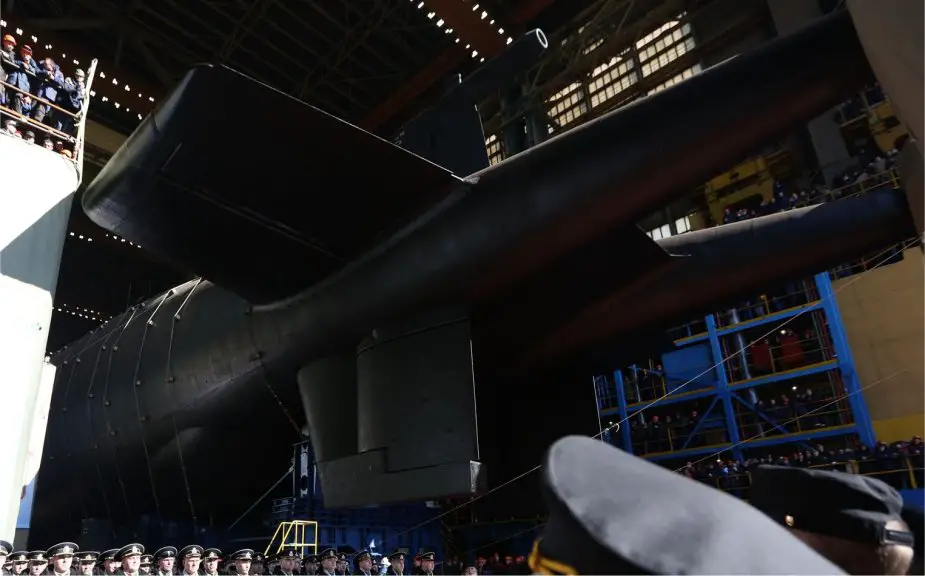Breaking news
Russian nuclear powered submarine Belgorod reportedly deployed.
According to information published by la Repubblica on October 2, 2022, Russia reportedly deployed its nuclear-powered submarine Belgorod which would be able to carry the nuclear-armed UUV Poseidon.
Follow Navy Recognition on Google News at this link
 Launching ceremony of the Russian Oscar II class submarine Belgorod (Picture source: Inosmi)
Launching ceremony of the Russian Oscar II class submarine Belgorod (Picture source: Inosmi)
K-329 Belgorod is a modified design of the Oscar II class (NATO designation) Russian nuclear submarine. It was originally laid down in July 1992 as a Project 949A cruise missile submarine (NATO designation Oscar II class), but later was redesigned and the partly built hull was used to be reconfigured as a special operations vessel, able to operate unmanned underwater vehicles. The vessel was relaid in December 2012.
In the construction process the original 154-meter long hull was lengthened to 184 meters (which is almost 11 meter more than the Project 941 SSBNs - the world's largest submarines ever built) with a width of 18,2 meters.
About the Poseidon UUV
The Poseidon, previously known by Russian codename Status-6, is an autonomous, nuclear-powered, and nuclear-armed unmanned underwater vehicle under development by Rubin Design Bureau, capable of delivering both conventional and nuclear payloads.
The Poseidon appears to be a torpedo-shaped robotic mini-submarine which can travel at speeds of 185 km/h (100 kn). More recent information suggests a top speed of 100 km/h (54 kn), with a range of 10,000 km (5,400 nmi; 6,200 mi) and a depth maximum of 1,000 m (3,300 ft).
Typical depth of the drone may be about 50–100 meters (160–330 ft) for increased stealth features in low-speed stealth mode. Low depth in stealth mode is preferred because sound waves move to ocean floor and reduce radius of detection. Submarines use the same strategy in silent running mode.
It is 1.6–2 metres (5 ft 3 in – 6 ft 7 in) in diameter and 24 metres (79 ft) long. The warhead shown in the leaked figure is a cylinder 1.5 metres (4 ft 11 in) in diameter by 4 metres (13 ft) in length, giving a volume of 7 cubic metres (250 cu ft).
Comparing this to the volumes of other large thermonuclear bombs, the 1961 Soviet-era Tsar Bomba itself measured 8 metres (26 ft) long by 2.1 metres (6 ft 11 in) in diameter, indicating that the yield is at least several tens of megatons, generally consistent with early reports of 100 megatons. Some reports suggest the yield of the Poseidon's warhead is as low as 2 Mt.


























